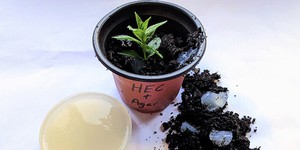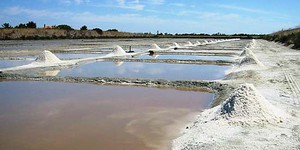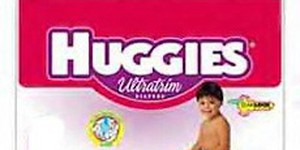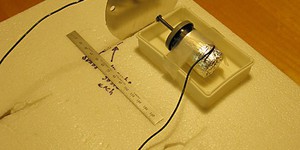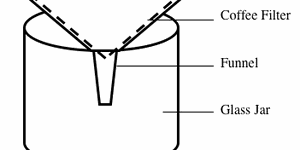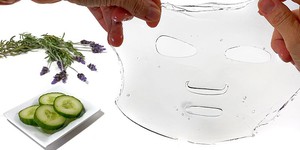Others Like “Diaper Science: How Hydrogels Absorb Water” (top 20 results)
|
Fill a jar a little more than half full with fresh water. Make a solution of salt water, and add a drop or two of food coloring to it. Pour the salt water solution into a plastic cup with a small hole in the bottom, and then place the cup in the jar with fresh water. (The only connection between the fresh and salt water should be via the hole in the bottom of the cup.) With the right combination of hole size and salt concentration, you will see an oscillating current develop in the jar. …
Read more
Growing crops takes a huge amount of water. That same water is also needed for drinking, bathing, and other industries. In dry climates or lands experiencing drought, there is a big push to conserve (save) water as much as possible. In this project you will experiment with creating environmentally friendly jelly-like materials called hydrogels and see if they can help soil retain water thus reducing the amount of water needed to grow crops.
Read more
Have you ever been swimming at the beach and gotten some water in your mouth by mistake? Then you know that the ocean is very salty. But what about other bodies of water? How much salt do they have compared to the ocean?
Read more
Chances are, you have several materials around your house made of gelatinized materials. Gels are used in all kinds of products and materials: pudding, diapers, insoles, packaging, ice cream, toothpaste, and many more. In this project, find out how gels are made and how they can be adjusted from firm to soft by changing the ingredients.
Read more
A solution consists of a solute dissolved in a solvent. A solution is saturated when no additional solute will dissolve in it. You'll need a gram balance, a 100 ml graduated cylinder, three beakers or glass jars, three saucers, water, 50 g non-iodized salt (NaCl), 50 g Epsom salts (MgSO4) and 250 g sugar (sucrose). Method 1: Measure 100 ml water and pour into an empty beaker or jar. Weigh out the suggested amount of the solute to be tested. Add a small amount of…
Read more
Have you ever gotten a shock touching a doorknob after walking across a carpet? Static charge is responsible for that shock. Wouldn't it be cool to save up and store all of that charge in a homemade jar? It would almost be like storing lightning. This science project will show you how to do that.
Read more
Have you ever mixed together salt and sand? It is fun to see how all of those tiny grains of salt and sand mix together! But what if you had to separate them out again? Do you have nightmares of tiny tweezers, a magnifying glass, and hours spent picking grains of salt and sand apart? Do not be afraid, there is another way! In this chemistry science project you will use the differences in solubility between salt and sand to find out the simple "solution" to this problem.
Read more
Some plastics undergo an unusual transition, from a hard, glassy state to a soft, rubbery state, with increased temperature. For this project, you should do background research on the effects of temperature on different types of plastics. Make sure that you understand the difference between thermosetting and thermoplastic polymers. You should also look for information on the glass transition temperature (Tg) for different plastics. Pure polyvinyl acetate has a Tg of 28 C (about…
Read more
Have you ever tried a beauty face mask? Cosmetic face masks are skin care products that promise rapid hydration of your skin to make it look younger and more radiant. Hydrogel face masks are made of jelly-like materials that are infused with special ingredients to nurture your skin. The ingredients for cosmetic products like face masks are carefully selected by cosmetics chemists. Each product is designed to have the properties that are necessary for its intended purpose. In this science…
Read more
Here's a practical engineering challenge: you need to build an enclosure for your dogs, using material that they can't chew through. It's going to be a lot of work to build, so you want to do it right. What material should you choose for the fencing? This project uses the scientific method to evaluate materials.
Read more
|
Explore Our Science Videos
DIY Light Up Unicorn Headband
Explore Concave and Convex Mirrors– STEM Activity.
Investigate Alien Genetics



